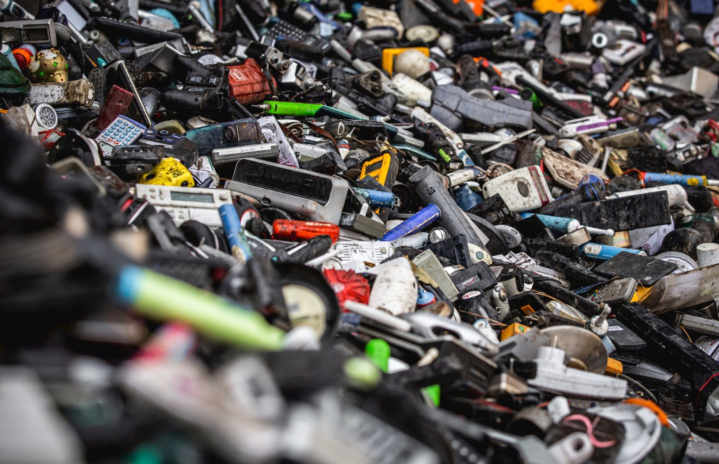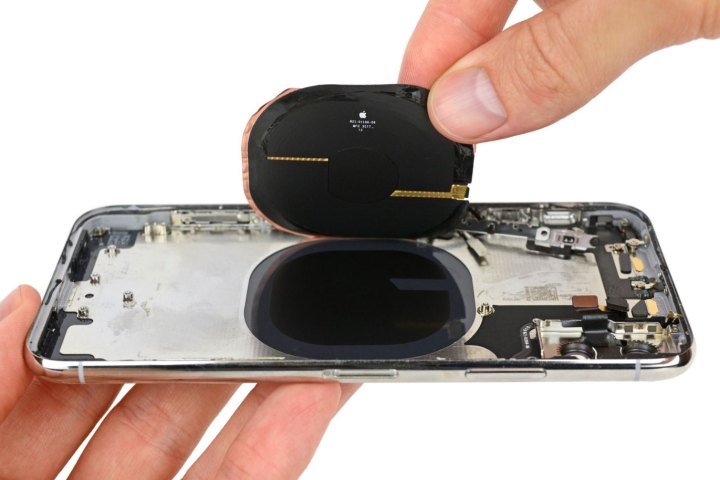Mountains of old phones, tablets, laptops, smart speakers, headphones, and assorted gadgets are leaching harmful chemicals into soil around dumps worldwide. That is, until they’re ready to get incinerated, at which point they’ll birth plumes of airborne toxins and endanger people in the developing world — all for the sake of a few nuggets of recovered semi-precious metals.
Luckily, the right to repair movement is here to fight this growing e-waste problem. By giving devices longer life, consumers can reduce the number of times they need to toss a gadget in the trash with minimal hope that it gets recycled responsibly. In recent months, big names like Apple, Samsung, and Google have made announcements supporting greater repairability of their products. Are these initiatives enough to make a real dent in the problem, or are they simply lip service to defend against impending legislation that could potentially hurt the bottom line of industry giants?
Earth’s e-waste problem
Right now, humanity pumps out over 53 megatons of e-waste annually, and only 17% of it is collected and documented properly. Our rate of e-waste generation went up by 21% between 2015 and 2020, with rates expected to continue to climb four to five percent annually. Despite only taking up about 5% of solid waste volume, e-waste is the source of 70% of its total toxicity. Much of it gets shipped off to developing countries where substandard processing results in direct exposure of toxic heavy metals to workers. For example, some 50,000 Bangladeshi children are involved in e-waste recycling, with 83% dealing with long-term health problems from exposure, such as cancer and asthma. 15% die as a result of their participation in the industry. These chemicals also reach the local populace by leaching into the soil and water supply, then back up to humans through food sources.
While there’s plenty of localized environmental runoff from inadequately processed e-waste, there’s also the lost economic opportunity. Mining the metals required for electronics is expensive and has its own significant environmental footprint. Meanwhile, there are perfectly reusable resources in our old devices that are going to waste. The International Panel on Climate Change’s latest report outlines solutions we can be implementing to meet climate goals, and repairability makes the list. “Policymakers need to leverage the potential socio-economic opportunities of transitioning to circular economies which show positive GDP growth and job creation by shifting to more labor-intensive recycling plants and repair services than resource extraction activities,” says the mitigation report.

The current state of affairs
Apple kicked off the recent spat of manufacturer repair initiatives in the last year. It was a pleasant surprise from a company that has historically been downright adversarial to the right to repair. Samsung and Google quickly followed suit by making official OEM parts available for sale.
That’s all well and good, but both programs are far from perfect. Samsung’s repair program, for example, inflates the cost of a battery replacement by gluing the screen to the battery itself, whereas Apple’s repair program doesn’t offer replacement ports and connectors, which are particularly prone to failure. These are some of the main gripes of Louis Rossmann, long-time right-to-repair advocate and repair technician. He argues that even with these new programs, the repair world is still worse off than it was thirty or forty years ago.
“I think they’re all moving to a model of serialization of parts, so even if you find an OEM part, it won’t work the same. Less parts being available than before. Less manuals being available than before. A model of lending or leasing rather than owning.”
Big manufacturers twisting the definition of ownership isn’t a new tactic either. Just look at John Deere. Serialization is a major tool the company uses to complicate the DIY repair process. This makes it so that you can’t just take a part from one machine and pop it into another. The parts have serial numbers which need to match the parent in order to function. John Deere defended this practice in a 2015 copyright lawsuit, saying that a farmer only had “an implied license” to use their tractor. John Deere continues to obstruct the right of farmers to fix their own equipment, and insists on funneling service into monopolistic repair shops. This gives manufacturers the power to control who gets the parts they need, and how much they cost.
In Apple’s case, you can see this with the requirement of a software activation for a rear glass cover, despite the iPhone 14 being their most repairable device in years. Cory Doctorow, author and Special Advisor at the Electronic Frontier Foundation, describes another mechanism used by Apple to accomplish this goal.

“Apple does this bizarre thing where they engrave tiny logos on parts in assembly, inside the device. If you send a phone overseas to be stripped down, then shipped back to the U.S. as refurbished parts, they can be blocked at the border due to trademark tarnishment. This is because it has an Apple trademark on it that wouldn’t be obvious to a user without a jeweler’s loupe, and the part might not be as robust as a brand-new one. Apple routinely asks customs authorities to block reimportation of actual Apple parts made in Apple factories.”
The Digital Millennium Copyright Act of the late 90s set a lot of the groundwork for this type of intellectual property defense. The potential for abuse was evident to critics at the time, and the DMCA’s use has since expanded well beyond the piracy of disc-based media it was originally intended for.
Is a better system possible?

Though the big players may not be doing enough to properly support right to repair, some underdogs are making it a selling point. Up-and-coming electronics manufacturer Framework has developed a laptop with components that can be swapped with ease. By all counts, Framework has succeeded with minimal compromises to system performance. In fact, they just launched their first motherboard upgrade. Valve, a major force in PC games but a relative neophyte in hardware, offers a repair kit for their Steam Deck. Then you have Fairphone, which not only offers devices with a plethora of user-replaceable parts, but also ensures their materials are equitably sourced.
Thea Kleinmagd, Circular Material Chains Innovator at Fairphone, tells us, “When a small company like Fairphone can offer spare parts, free repair information, and long-term software updates for their phones while being profitable, why should a lawmaker refrain from demanding this from every company?”
But Fairphone and other niche players are operating at a much different scale than Apple, Samsung, and Google. Can Fairphone’s standards apply to the mammoth production volumes of tech giants? Framework sympathizes with the difficulty of larger companies changing direction.
“If your business is built around the revenue that comes from a mature and consistent replacement cycle, transforming your business to work in a longer replacement cycle is extremely difficult. This works in our favor as a startup,” says Framework CEO Nirav Patel. “Since we started from zero market share and zero revenue, everything is growth for us. Success for us and our mission is actually decreasing the total revenue of each category we enter by reducing the number of units that need to be manufactured each year.”

Fairphone agrees that repair service is something that manufacturers need to factor into their business model. “If the revenue of a company is solely based on sales of devices, they don’t have an interest in producing long-lasting devices since they cannibalize their own sales,” says Kleinmagd. One study suggested that American consumers could save $40 billion a year if they repaired their devices instead of replacing them, which would be great for end users, but would be lost revenue for manufacturers.
Google and Samsung have found a convenient partner in iFixit to offload some repair responsibilities onto. iFixit has already been selling repair kits for some time, and has a healthy perspective on the financial pressures of the industry.
“There are economic opportunities for manufacturers in a repair-friendly marketplace. Many repair technicians want to buy official manufacturer parts. Since manufacturers often don’t offer parts, independent technicians end up buying third-party parts instead. Manufacturers could capture some of that repair parts revenue. Modular hardware also lets manufacturers enter a new market: aftermarket upgrades. What if people could buy a new camera module instead of a whole new phone? Automotive aftermarket repair and upgrade is a $405.8 billion-dollar industry,” Elizabeth Chamberlain, iFixit’s Director of Sustainability tells us.
Enacting real legislative change
Despite the existence of promising alternatives, Rossmann’s overall assessment of the world of repair remains bleak. “I think there’s progress in terms of people understanding right to repair as an issue. I think there’s zero progress in terms of there being any sort of real change.” Having manufacturers co-opt right to repair in visible but superficial ways can be their way of getting end users to back off from pressuring political representatives for meaningful legislation.
Other right-to-repair activists are more optimistic. Gay Gordon-Byrne, Executive Director of The Repair Association, says “Europe has been promoting design standards for home appliances, TVs, and now cell phones. France has required a repairability index that has worldwide value. We’ve got legislation passed in two states and more underway. The FTC has evaluated opposition ideas and rejected them entirely. It’s been a decade of work now coming to fruition. I tell people that New York’s Fair Repair Act fixes about 80% of the practical problems with repairing equipment covered by the law. Another 20% of problems are problems of federal copyright law and cannot be altered by the states. Obviously the Fair Repair Act also carves out some categories that we want to expand, particularly agricultural equipment and home appliances.”
Doctorow concurs that the divide between state and federal levels complicates progress. “In the U.S. there’s a doctrine of pre-emption, where federal law zeroes out state laws that tread in the same territory. Once you pick off these victories at the state level, they tend to capitulate to federal legislation. That’s what’s happening right now with federal privacy law. The big ad tech companies are finally on board for a federal privacy law, but they want it to trump all state privacy laws, including ones that are more strict.”
There remain so many hurdles to right to repair that it can be easy to get pessimistic. Intense profit incentives and a quagmire of legalities seem stacked to erode consumer rights and leave a whole lot of toxic chemicals in an e-waste wake. Alternative modes of operating are gaining in visibility, but they require grassroots support to spread. If you’re interested in pushing right to repair forward, you can lend your support to the following legislative measures across the US.
Editors’ Recommendations




